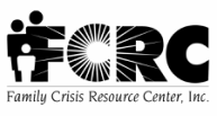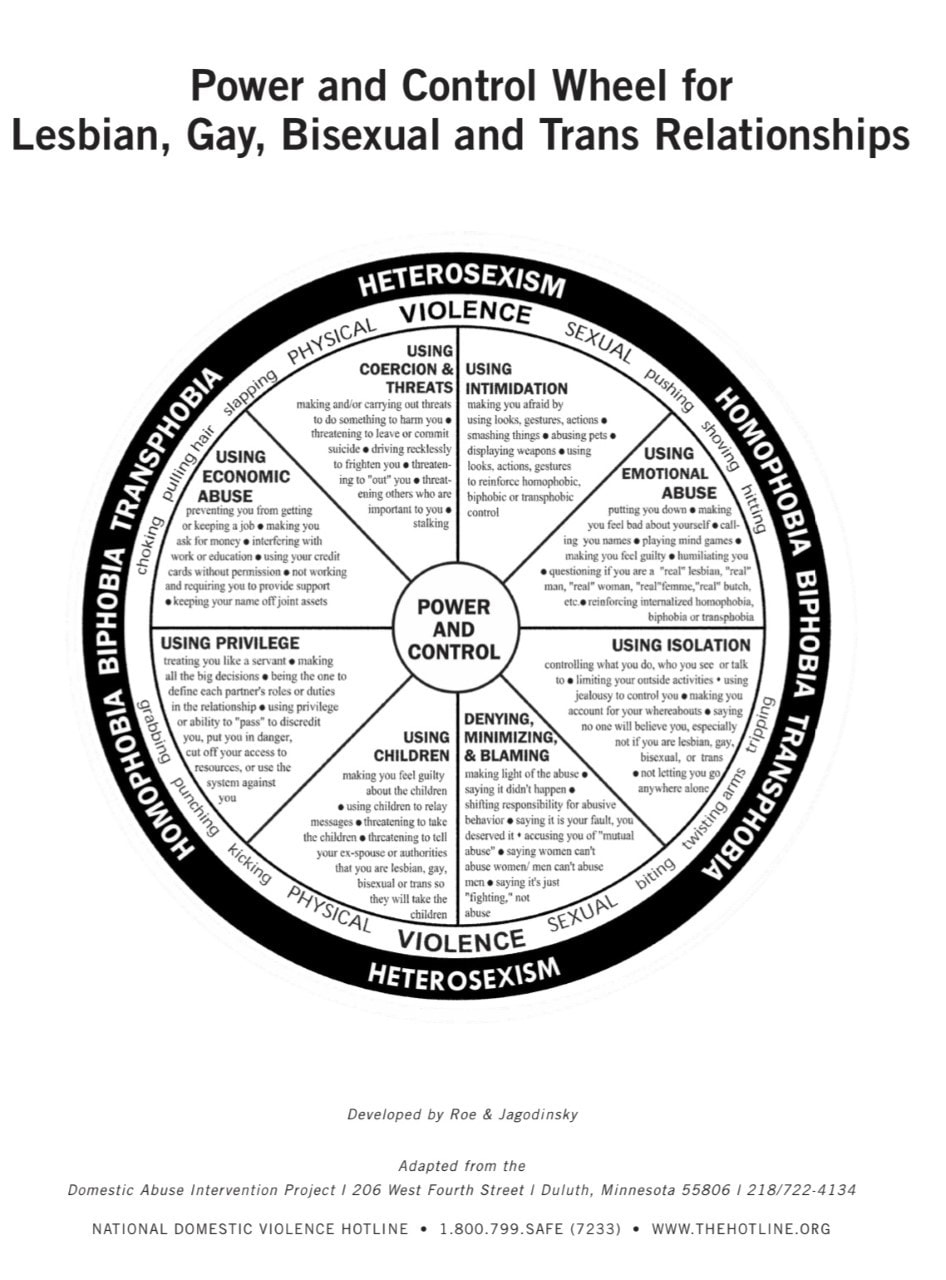A Two Part Series: Addressing IPV and Sexual Violence in the LGBTQIA CommunityAs LGBTQIA allies and advocates for survivors of intimate partner violence and sexual assault, we wanted to bring to our readers a two-part blog series highlighting the LGBTQIA community. At the national level, awareness about intimate partner violence has traditionally focused on heterosexual norms and relationships. As more research becomes available, society has learned that the LGBTQIA community is affected by intimate partner violence equally, if not more, than heterosexual cis-gendered couples. Intimate partner violence within the LGBTQIA community is vastly underreported, not acknowledged, or reported as something else rather than domestic violence. Due to past trauma and stigma, LGBTQIA survivors are less likely to seek help and resources regarding intimate partner violence.
Power and Control There are several tactics a perpetrator of abuse may use such as intimidation, emotional abuse, isolation, denying/minimizing/blaming, using children, using privilege, economic abuse, and using coercion/threats (See below image for the Power and Control Wheel, provided by the National Domestic Violence Hotline). When looking at these different forms of power and control for someone of the LGBTQIA community, the use of homophobia, biphobia, and transphobia is prevalent. For example, a perpetrator of abuse may isolate the victim/survivor by saying “No one else will love you because of your sexual orientation/gender identity” or “If you leave me you will never see our children again, because of your sexual orientation/gender identity”. Additionally, in smaller communities (like ours) this can also be a form of control as the perpetrator could use neighbors and other members of the community to keep track of the victim/survivor’s movement or whereabouts. While the tactics of power and control used by perpetrators of abuse remain comparable to those of heterosexual relationships, some additional and unique forms may be used. One such form of power and control a perpetrator may use is threatening to “out” the victim/survivor’s sexual orientation/gender identity to their workplace, family, friends, or community members (National Resource Center on Domestic Violence NCADV, 2018). Another form of power and control for someone who is transgender is when the abusive partner uses inappropriate pronouns, referring to the victim/survivor as “it” rather than their preferred pronoun (NCADV, 2018). The abusive partner may ridicule the transgender partner’s body or identity or tell the transgender partner that they are not a “real” man or woman (NCADV, 2018). Barriers/Stigma The LGBTQIA community faces additional barriers regarding intimate partner violence, preventing members to seek services, which include (National Coalition Against Domestic Violence, 2020):
Support What can you do if someone you care about is a victim/survivor of intimate partner violence (The NW Network of Bi, Trans, Lesbian, and Gay Survivors of Abuse, 2013)?
0 Comments
|
Archives
February 2021
Categories |



 RSS Feed
RSS Feed
